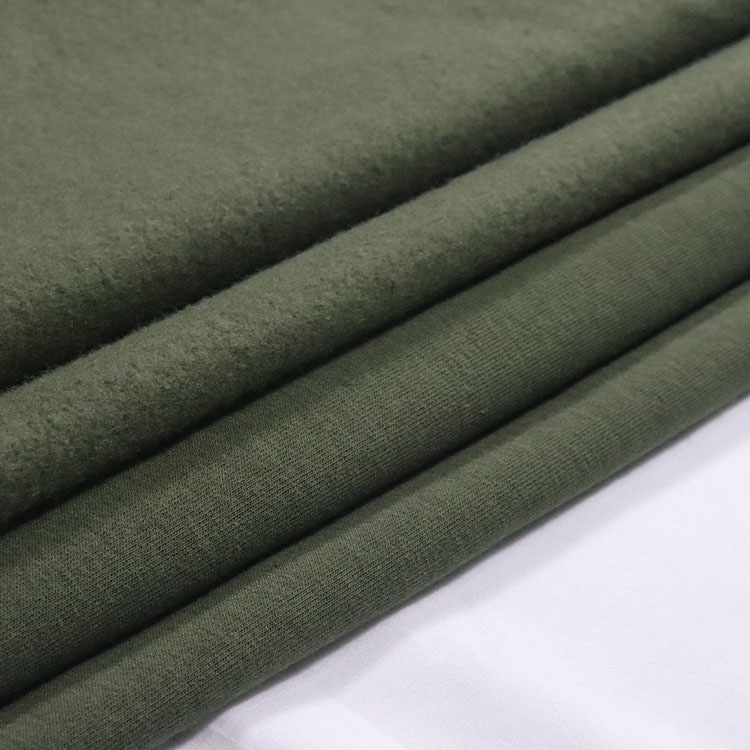Many buyers see a finished fabric roll and judge it by touch, weight, or color, but understanding the process behind materials like Forest-Green Stretch Fleece Knit Fabric can offer deeper insight into quality, consistency, and suitability for end-use. From raw fiber selection to knitting and finishing, each production stage shapes the performance and appearance of the final textile. For manufacturers and sourcing specialists, knowing what goes into each meter of fabric helps ensure better product outcomes—and fewer surprises in production.
The journey begins with fiber selection. Most stretch fleece fabrics are made using a blend of synthetic fibers like polyester for durability and moisture resistance, and elastane (spandex) for stretch. Sometimes, cotton or rayon is added for softness and breathability. The specific blend is chosen based on the intended use—whether for casual sweatshirts, athletic wear, or thermal garments. After blending, the fibers are spun into yarns using ring spinning or air-jet techniques, depending on the required yarn strength, twist, and fineness.
Once the yarn is ready, it enters the knitting stage. Forest-Green Stretch Fleece Knit Fabric is typically made using circular knitting machines, which produce tubular fabric with a high degree of elasticity. The machine settings—like stitch density and tension—are carefully calibrated to control fabric weight and stretch recovery. What makes fleece fabric different at this point is the use of brushed loops on one side of the knit, which sets the groundwork for the soft, insulating inner surface the fabric is known for.

After knitting, the fabric undergoes brushing, which is a mechanical finishing process. This is where one side of the fabric is treated with fine wire rollers to raise the fibers, creating the familiar fleece texture. This brushed inner surface traps air and enhances insulation, making it ideal for garments designed for cooler climates. For a product like forest-green fleece, consistent brushing is essential to avoid patchy textures or uneven warmth across a garment.
The next step is dyeing, and this is where the rich forest-green tone comes to life. Dyeing can be done before or after knitting depending on the production method, but for bulk production, piece dyeing is common. Achieving a deep, uniform green requires strict control of pH levels, temperature, and dye timing. Poorly managed dyeing processes can result in color variations, fading, or off-shade batches—problems no buyer wants in a bulk order. That’s why working with an experienced supplier ensures a smoother process and fewer issues down the supply chain.
Finally, the fabric goes through finishing processes such as heat setting to stabilize the structure, compacting to control shrinkage, and quality inspections for stretch performance and surface defects. Only then is the Forest-Green Stretch Fleece Knit Fabric rolled, labeled, and prepared for delivery. For buyers who prioritize consistency, durability, and a professional textile partner, understanding this journey confirms the value behind each roll. After all, great products start with great materials—and the right supplier makes all the difference.

 English
English Français
Français




